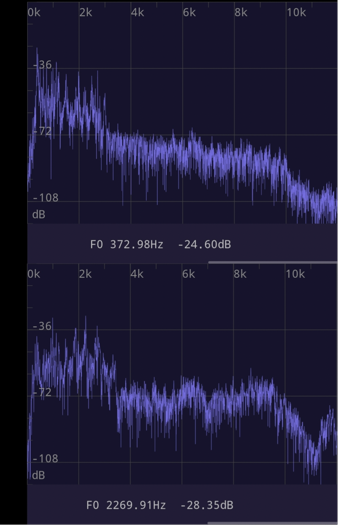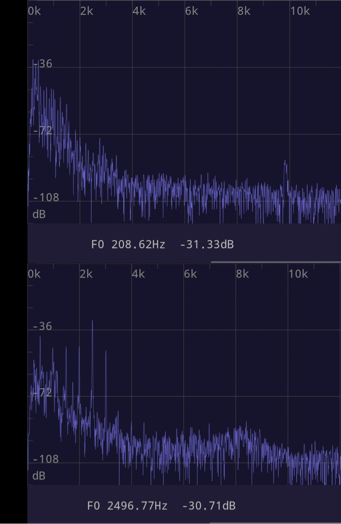1. Introduction
The history of music can be traced back to the early days of human civilisation. The music of different periods has different artistic characteristics, but also conveys the emotions and ideas of people in different periods. After discovering that music has an effect on emotions, people often use music for therapeutic purposes. In 1995, scientists Rauscher and Shaw GL found that temporary listening to Mozart’s music can improve spatial cognitive ability, and put forward the famous “Mozart effect” [1]; Hu Jingjing and other experimental research found that TchE and MAO in the brains of mice in the Liangzhu music group were significantly reduced compared to the control group, which signified that the mice’s brain was not as strong as that of the control group. In 2013, Chan, Alice S. and Helen Tager-Flusberg concluded that music has a positive effect on brain function and can promote children’s language ability and cognitive development [3]; the types of music that have been developed so far have been very diverse, so we decided to select two of the most well-known and popular genres for this study. In this study, we decided to choose the two most familiar and popular types of music, pop music and classical music, to investigate the effects of these two types of music on the spatial memory and activities of mice, in order to lay a theoretical foundation for the future guidance of students’ education and patients’ rehabilitation and other practices.
2. Materials and methods
2.1. Materials
Thirty healthy adult Kunming rats, weighing 35-55 g, half male and half female, were purchased from the Animal Experiment Centre of Qiqihar Medical College.
Morris water maze; Morris Animal Behavioural Experiment Software; sound-proof box; classical music (Piano Sonata No. 14 in ascending c minor, Moonlight op. 27.2); pop music (Parade), and the intensity of the background music was controlled to be 60~70dB.
2.2. Methods
2.2.1. Clusters
The experimental animals were randomly divided by sex into female control group (n=5), male control group (n=5), female classical music group (n=5), male classical music group (n=5), female popular music group (n=5), male popular music group (n=5)
2.2.2. Intervention
The small speakers were placed in the soundproof box, and the sound volume meter measured 60~70 dB in each cage box when the speakers were turned off, and 30 dB outside the cage box, and 60~70 dB in the cage box when the music was played, and the mice in each group did not interfere with each other when they received the music stimulation. Every day from 9:00 am to 11:30 am and from 15:00 pm to 17:30 pm, the speakers in the cages of each music group played the corresponding music, and the blank group placed the same speakers but kept them turned off, and the water maze test was conducted at the end of each 6-day cycle. A total of three tests were performed, during which the mice were fed and watered freely. The musical frequencies of the two pieces of music are shown in Figure 1.


Figure 1. The musical frequencies of the two pieces of music. (Photo credit: Original)
2.2.3. Morris Water Maze Test
The musical stimuli were kept constant during the test. Fresh water was added to the labyrinth, and the water temperature was controlled to be between 18℃ and 22℃, with the water surface about 1 cm above the platform so that the platform could not be seen by the naked eye. The maximum latency of the automatic recorder was set to 90 s. The localisation navigation experiment was conducted at 9:00 am on the 7th day of each cycle after 6 d of intervention. Mice were placed into the pool with their backs facing the platform from four entry points in the east, south, west and north of the pool, and the time taken for the mice to locate and climb up to the platform, i.e. the latency to escape, was observed and recorded. mice that could not locate the platform within 90 s were guided to the platform and remained there for 10 s. The test was conducted four times consecutively.
2.3. Statistical analysis
The experimental data of each group were expressed as mean ± standard deviation(x±s), and the data were analysed using repeated measures analysis of variance (ANOVA), a statistical software, and the difference was considered significant at P < 0. 05. The results are shown in Table 1
Table 1. Average latency of water maze (x±s,n=10,s)
Group | 1st day | 2st day | 3st day | Control group | 51.21±15.18 | 50.33±17.55 | 51.17±16.37 | Classical group | 50.93±23.35 | 41.17±21.74 | 29.11±15.42 | POP group | 44.09±21.96 | 46.32±17.59 | 44.54±21.48 |
3. Result
In the positioning navigation experiment, the latency time was shorter in the music group compared to the control group and became shorter in the classical group as the training time increased. There was a significant difference between the classical group compared to the control group (p<0.05), while there was no significant difference between the popular group compared to the control group (p>0.05).
4. Conclusion
Learning and memory are complex processes, and it has been shown that the establishment of short-term memory is associated with an increase in synapses, with serotonin leading to an increase in presynaptic cAMP, which activates the pka and leads to synaptic enhancement through the release of augmentative transmitters generated by the connectivity mechanism; long-term memory persists through the growth of new synaptic connections, a structural change that parallels the duration of behavioural memory. As memories fade, these connections contract over time [4].
Music, as an integral part of our daily lives and studies, has not only been limited to the role of appreciation and enrichment, but also has therapeutic effects. It has been found that music plays a therapeutic role in psychosomatic and physiological diseases, and has an important role in assisting in the treatment of adverse emotions such as tension anxiety depression and pain [5]. Not only that in the experiment also found that music stimulation can improve the spatial memory ability of rats ,enhance the hippocampal neuron NMDA receptor and encoding NMDA receptor mRNA expression [6].
The results of this experiment showed that the spatial memory ability of mice in the classical group was significantly improved compared with that of the control group, which indicated that classical music promoted the development of related areas in the brain to a certain extent, confirming the enhancement effect of classical music on spatial memory. There was no significant difference between the pop group and the control group, and this result does not confirm that pop music can enhance spatial memory. The music tracks chosen in this study are few, and only a preliminary exploration of different music genres was made, which has certain limitations, and the subsequent experimental study can be conducted by increasing the music tracks of various genres.
Authors contribution
Binying Fu, Jiale Zheng made the same contribution. Binying Fu: Introduction. Jiale Zheng: Conclusion.
References
[1]. Rauscher FH, Shaw GL, Ky KN. Listening to Mozart enhances spatial-temporal reasoning: towards a neurophysiological basis. Neurosci Lett. 1995 Feb 6 ;185(1):44-7.
[2]. Hu JJ, Lu DX, Qi RB et al. A preliminary study on the spatial learning memory ability and mechanism of different types of music in mice[J]. Journal of Jinan University (Medical Edition), 2007(02):132-135.
[3]. Chan, Alice S., and Helen Tager-Flusberg. “Music training, language and the developing brain.” Music, language, and the brain (2013): 204-223.
[4]. Kandel, E R. “The molecular biology of memory storage: a dialogue between genes and synapses.” Science (New York, N.Y.) vol. 294, 5544 (2001): 1030-8.
[5]. Song Li-Che-Hsiung, Li Xiao-Yu, Qiu Ya-Lan, et al. Application of music therapy in physical and mental diseases[J]. Chinese Journal of Traditional Chinese Medicine, 2019, 34(09):4186-4189.
[6]. WANG Zengxian, WANG Xiaoya, WANG Huaijing et al. Effects of music on learning and memory and hippocampal NMDA receptor expression in rats[J]. Journal of the Fourth Military Medical University, 2004(24):2237-2240.
Cite this article
Lv,D.;Zhang,M.;Fu,B.;Zheng,J. (2024). Effects of different types of music on spatial memory in mice. Theoretical and Natural Science,57,171-174.
Data availability
The datasets used and/or analyzed during the current study will be available from the authors upon reasonable request.
Disclaimer/Publisher's Note
The statements, opinions and data contained in all publications are solely those of the individual author(s) and contributor(s) and not of EWA Publishing and/or the editor(s). EWA Publishing and/or the editor(s) disclaim responsibility for any injury to people or property resulting from any ideas, methods, instructions or products referred to in the content.
About volume
Volume title: Proceedings of the 4th International Conference on Biological Engineering and Medical Science
© 2024 by the author(s). Licensee EWA Publishing, Oxford, UK. This article is an open access article distributed under the terms and
conditions of the Creative Commons Attribution (CC BY) license. Authors who
publish this series agree to the following terms:
1. Authors retain copyright and grant the series right of first publication with the work simultaneously licensed under a Creative Commons
Attribution License that allows others to share the work with an acknowledgment of the work's authorship and initial publication in this
series.
2. Authors are able to enter into separate, additional contractual arrangements for the non-exclusive distribution of the series's published
version of the work (e.g., post it to an institutional repository or publish it in a book), with an acknowledgment of its initial
publication in this series.
3. Authors are permitted and encouraged to post their work online (e.g., in institutional repositories or on their website) prior to and
during the submission process, as it can lead to productive exchanges, as well as earlier and greater citation of published work (See
Open access policy for details).
References
[1]. Rauscher FH, Shaw GL, Ky KN. Listening to Mozart enhances spatial-temporal reasoning: towards a neurophysiological basis. Neurosci Lett. 1995 Feb 6 ;185(1):44-7.
[2]. Hu JJ, Lu DX, Qi RB et al. A preliminary study on the spatial learning memory ability and mechanism of different types of music in mice[J]. Journal of Jinan University (Medical Edition), 2007(02):132-135.
[3]. Chan, Alice S., and Helen Tager-Flusberg. “Music training, language and the developing brain.” Music, language, and the brain (2013): 204-223.
[4]. Kandel, E R. “The molecular biology of memory storage: a dialogue between genes and synapses.” Science (New York, N.Y.) vol. 294, 5544 (2001): 1030-8.
[5]. Song Li-Che-Hsiung, Li Xiao-Yu, Qiu Ya-Lan, et al. Application of music therapy in physical and mental diseases[J]. Chinese Journal of Traditional Chinese Medicine, 2019, 34(09):4186-4189.
[6]. WANG Zengxian, WANG Xiaoya, WANG Huaijing et al. Effects of music on learning and memory and hippocampal NMDA receptor expression in rats[J]. Journal of the Fourth Military Medical University, 2004(24):2237-2240.









